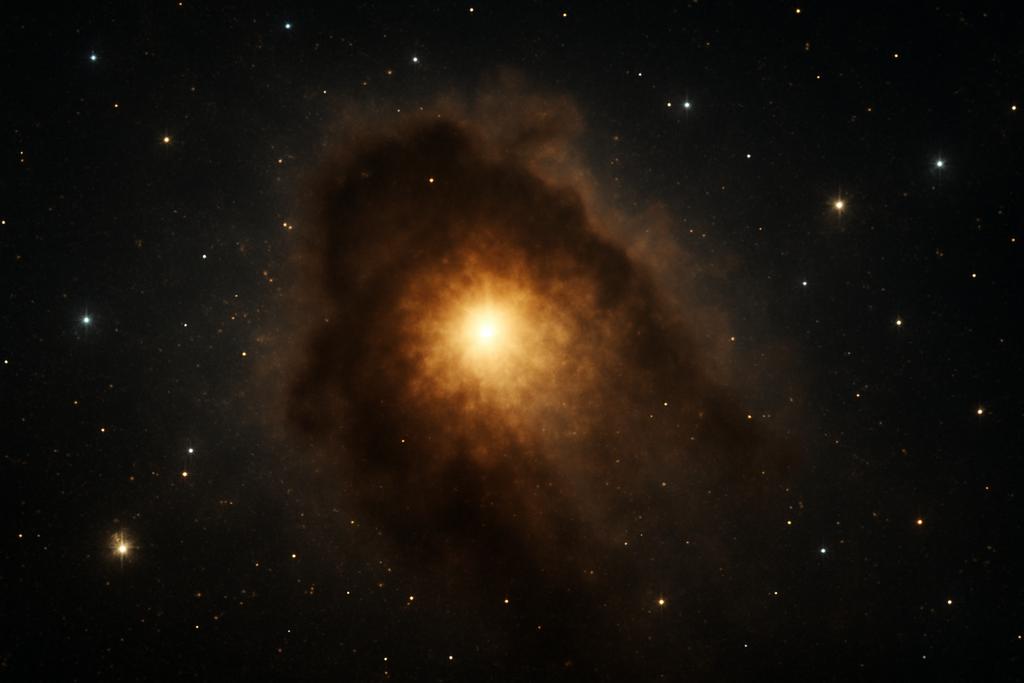Supergiant B[e] (sgB[e]) stars are cosmic enigmas, exceedingly rare behemoths whose evolutionary pathways remain shrouded in mystery. These stars, characterized by intense Balmer emission lines and an infrared excess suggesting dust-laden surroundings, represent fleeting, transitional phases in the lives of massive stars. Only a handful have been confirmed in our Milky Way galaxy, making them exceptionally valuable for unraveling the secrets of stellar evolution.
An X-Ray Detective Story
Wd1-9, nestled within the dense star cluster Westerlund 1, is one of the few sgB[e] stars discovered within a stellar cluster. This location offers a crucial advantage: the ability to contextualize its evolution against its siblings, born under the same conditions. Previously, Wd1-9’s true nature had remained a puzzle, hidden behind a thick veil of dust, obscuring its core characteristics. However, a team of astronomers from multiple institutions, including the Center for Astrophysics | Harvard & Smithsonian, have used the Chandra X-ray Observatory to pierce this veil.
Their innovative approach involved analyzing a treasure trove of data, more than 1 million seconds (or approximately 11 days) of Chandra observations, a dataset dramatically larger than any previous study. This immense dataset, part of the ‘Extended Westerlund 1 and 2 Open Clusters Survey’ (EWOCS), allowed the researchers to reveal the star’s true nature through the X-rays, the only form of radiation that can penetrate the opaque dust.
The Rhythm of a Binary
The researchers uncovered a surprising, yet compelling, rhythm in the star’s X-ray emissions: a periodic signal with a cycle of approximately 14 days. This is the first time a periodic signal has been discovered for Wd1-9, hinting at a possible binary nature. This discovery is significant because it offers direct evidence of binarity—a feature previously only inferred.
This periodic signal wasn’t just a blip in the data. The researchers employed several independent methods, including the Lomb-Scargle periodogram and the String Length method, to confidently identify this 14-day rhythm. These robust techniques help filter out noise and ensure the signal isn’t a random fluctuation.
A Spectrum of Clues
The detailed X-ray spectrum obtained by the team painted a picture of an extremely hot plasma, exceeding 10 million degrees Kelvin. Such temperatures are highly unusual for single, non-magnetized massive stars but are commonly found in colliding-wind binary systems, where the winds of two stars crash into each other, producing this intense heat.
Moreover, for the first time, the researchers were able to detect strong emission lines from iron at 6.7 keV. The detection of this line, which had never been observed previously in the X-ray spectra of Wd1-9, added weight to the conclusion that this star is part of a binary system, which is now strongly supported by a number of independent arguments.
A Stellar Dance
The evidence strongly points to Wd1-9 as a binary system. The 14-day period is interpreted as its orbital period, implying that two massive stars are locked in a close dance around each other, with their winds colliding and generating the observed X-rays. The spectral analysis suggested a likely pairing of a Wolf-Rayet star, which has already lost its outer hydrogen envelope, and a more massive companion of similar initial mass, whose properties could not be constrained.
The researchers built a theoretical framework to explore what kinds of binary stars could explain Wd1-9’s X-ray properties. The framework accounted for the orbital period, properties of the stars, and shock formation in their winds. They concluded that a system with a Wolf-Rayet star and an O type main sequence star as components, was the most likely scenario.
A Rare Evolutionary Phase
The scenario that best fits this data is that this binary system likely underwent a phase of rapid mass transfer (early Case B mass transfer). In this process, the more massive star started transferring much of its mass to its companion star. This period is relatively short, and it is therefore hard to observe such systems. The data suggest that Wd1-9 is emerging from such a phase, thereby filling a significant gap in our understanding of stellar evolution. This stage is rarely observed, highlighting the value of Wd1-9 as a unique insight into the evolution of massive stars.
This research offers compelling new evidence for our understanding of how massive stars evolve. It’s a testament to the power of persistent observation and sophisticated data analysis to unravel the deepest mysteries of the cosmos. Lead by Konstantina Anastasopoulou and colleagues, this research has advanced our understanding of this rare phase in stellar evolution, offering a glimpse into a dynamic process previously hidden by a cosmic dust cloud.










